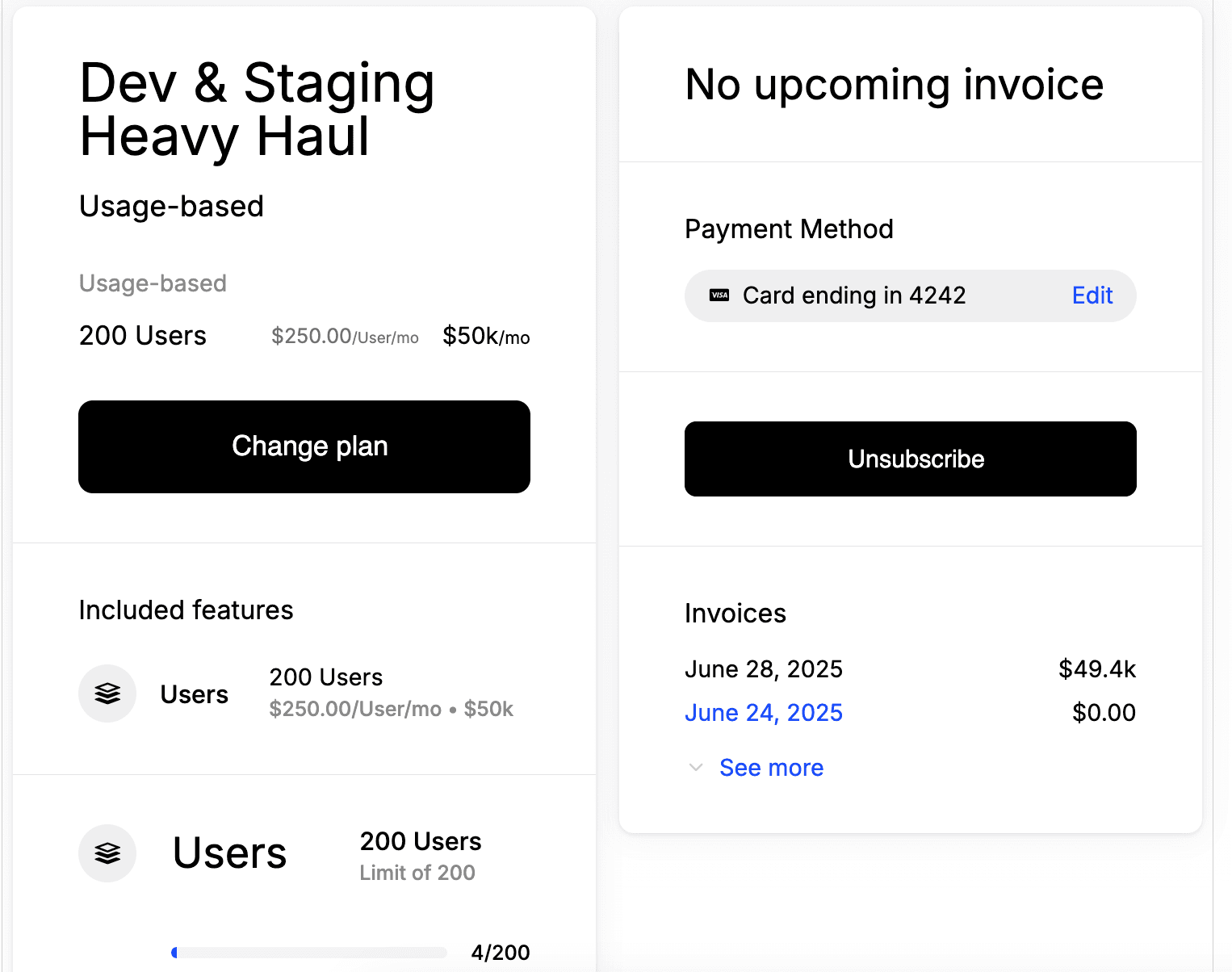Meet Lee John, VP of Engineering at JourneyTMS
Lee John runs engineering at JourneyTMS, a transportation management startup built for logistics companies. He’s handled billing infrastructure before: managing Stripe webhooks, handling plan logic, fighting edge cases. Lee knew how painful it could get, and this time around, he wanted a different path.
“We’re not a monetization company. We’re a TMS,” Lee said. “We just wanted the simplest route to monetize as possible.”
Stripe Complexity vs. Schematic Simplicity ⇒ Drastic Reduction in Billing Overhead
JourneyTMS started with Stripe, but quickly hit friction. Webhooks were brittle. Custom logic was sprawling. Changes were high effort and low joy.
Schematic replaced all of it.
Instead of wiring up dozens of webhook flows, JourneyTMS now fetches subscription state from Schematic as needed and lets the platform handle enforcement. All pricing logic -- seat counts, usage metering, invoicing -- is centralized and externally managed.
“Stripe is, I guess, like the Excel of monetization. It can do anything and everything… and we just want the simplest route to monetize as possible.”
The integration took ~1–2 weeks of focused effort. UI was handled by one engineer; backend by another. No long tail of edge cases. No internal billing system to maintain.
“I [now] spend none of my time on billing.”

Charge Based on Value
JourneyTMS monetizes on two dimensions:
Per-seat billing for users on the platform
A usage-based fee for uploading PDFs that trigger backend order generation
That usage fee isn’t just a line item, it shapes behavior and protects infrastructure. Processing PDFs into structured orders is compute heavy, and charging for it discourages abuse while capturing value.
“We don’t want people just hammering our servers with massive PDFs… so we charge a small fee to recomp some of that.”
It’s a clean model: no tiers, no complicated bundling. Just metered value, billed automatically.
Infrastructure as a Multiplier
Every customer, every dollar of monetization now runs through Schematic.
That means:
No billing roadmap items
No internal metering infra
No engineering lift to launch new monetization strategies
When JourneyTMS rolls out new products, billing won’t slow them down.
“We have plans for expanding, and that’s why we kind of went into Schematic, because we wanted to simplify that process.”